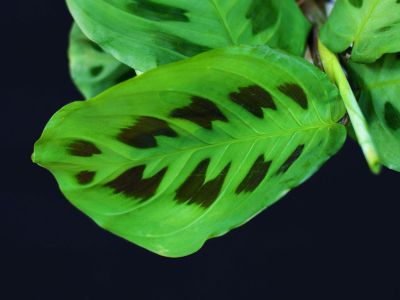Growing Prayer Plants
The rabbit’s foot prayer plant is native to Brazil and is only hardy in USDA zones 10b to 11. Throughout the U.S. they are grown primarily as houseplants. This prayer plant is not difficult to grow, but just like other varieties of Maranta, they do require a certain level of care. Follow these proven tips for successfully growing prayer plants:
Avoid direct sunlight: These plants prefer bright indirect light and can survive shady conditions. They also do well when grown under fluorescent lighting.Avoid overwatering: Keep the plant moist at all times but avoid soggy soil. Empty the drainage saucer after watering to avoid root rot and use lukewarm water. Avoid hard water or tap water containing fluoride.Use a light potting soil: The prayer plant Kerchoviana does best in a soil based potting mix with good drainage potential. A potting soil mixed with sand, peat moss, or loam is suitable as is a ready-made mix formulated for African violets.Increase humidity: Growing Kerchoviana indoors is often too dry of an environment for this tropical species. To increase humidity, place the planter on a tray of wet pebbles or mist frequently.Keep at room temperature: Like most tropical plants, this plant is sensitive to cooler temperatures. They do best between 65 and 80 degrees F. (18-27 C.).Feed regularly: Apply a diluted formula of balanced plant food once or twice a month during the growing season.
Caring for a Rabbit’s Foot Prayer Plant
The rabbit’s foot plant is an evergreen perennial. As a houseplant, it is fairly slow growing. Generally, they require repotting every other year and only if they outgrow their planter. Mature plants can grow to heights of 18 inches (46 cm.) tall, but growing prayer plants can be trimmed back should they begin to lose their vigor. Prayer plants experience an annual dormancy period. Water less frequently and withhold fertilizer during the winter months. They remain relatively disease free but can be attacked by a number of pests. These include spider mites, mealybugs, and aphids. Infestations can be safely treated with neem oil. As houseplants, Marantas are primarily grown for their attractive foliage. The rabbit’s foot prayer plant does produce inconspicuous flowers, if it blooms at all, when grown indoors. Propagation is usually accomplished by dividing root offshoots when repotting or through basal cuttings.
